Princess Faiza's Art Deco Emerald and Diamond Fringe Necklace
Open FREE Unlimited Store Join Our Newsletter
Lareef A. Samad - B.Sc (Hons)
Origin of Name
As the name indicates, the exquisite Art Deco emerald and diamond necklace designed by Van Cleef & Arpels in 1929 and modified in 1937, was purchased by Princess Faiza of Egypt-daughter of king Fouad I of Egypt (1868-1936) and sister of the last king of Egypt, King Farouk-in 1947. The imposing and graceful pure Art Deco style necklace was worn by Princess Faiza as a court jewel, as seen in one of her photographs taken in 1948, attending the Tahar Palace Ball in Cairo, and remained her property when she went into exile in Europe with her husband in 1952, after the Egyptian revolution, and subsequently moved to California to live with her mother Queen Nazli, after her divorce from her husband. Princess Faiza never went back to Egypt, and remained in California where she found a new life, until her death in 1994. Her personal jewelry, including the Art Deco emerald and diamond necklace, were disposed by her whenever the need arose, and prior to 1994, the classique Art Deco piece, became the property of an anonymous collector, who eventually decided to put it up for sale at a Christie's Magnificent Jewels Sale in Geneva, held on November 12, 2013.
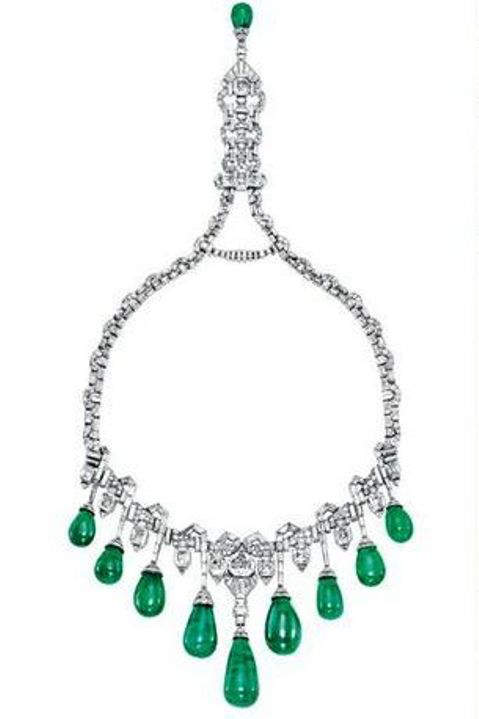
Princess Faiza's Art Deco Emerald and Diamond Necklace
Characteristics of the Necklace
Design features of the necklace
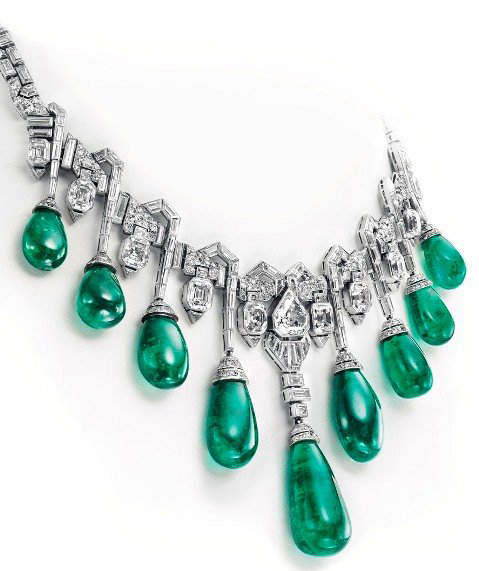
Close-up of a section of Princess Faiza's Emerald and Diamond Necklace
The materials used in the fringe necklace, platinum, diamonds and emeralds are all characteristic of the Art Deco period that extended approximately from 1920 to 1935. The necklace designed in 1929 has an inner circumference of 34.5 cm, and has a neckchain made of platinum set in the rear with alternating baguette-cut and epaulet-shaped diamonds, enhanced by pave-set diamond scalopped links. In the front, the neckchain suspends a fringe of nine graduated drop-shaped emeralds, by means of a bell-cap and baguette-cut diamond line surmounts, alternated with rectangular-cut diamond collets. The largest drop-shaped emerald is mounted as the centerpiece of the necklace, and four drop-shaped emeralds are placed on either side of the centerpiece in symmetrical positions. The drop-shaped emeralds decrease in size from the center towards the rear. Emeralds of almost identical shape and size are placed in symmetrical positions on either side of the centerpiece of the necklace. The central fringe of the necklace is mounted with square, rectangle and shield-cut diamonds.
The pendant clasp at the rear of the necklace is provided with a drop-shaped emerald terminal, making a total of 10 emerald drops in the necklace.
Art Deco Features in the Necklace
The necklace was designed in 1929 during the Art Deco period that extended from 1920 to 1935, and hence show many features of Art Deco jewelry. Some of these features are :-
1) The use of platinum metal in the necklace. Platinum was first used in jewelry during the Edwardian period (1901-1910), and again regained its popularity in the Art Deco period after World War I. The use of white gold as a more affordable alternative to platinum also started during this period.
2) The use of diamonds and emeralds in the necklace, two of the precious stones popular during this period apart from rubies and sapphires.
3) Symmetrical design of the necklace. The strong use of symmetrical designs in jewelry is a feature of the Art Deco jewelry.
4) The use of geometrical shapes such as triangles, circles, squares, rectangles, trapezoids, octagons and other polygonal shapes in the design of the necklace.
5) The use of baguette-cut, triangle-cut, emerald-cut and shield-cut diamonds in the necklace, all popular gemstone cuts during this period.

Tunneling method of emerald mining at Cosquez mine in Colombia

Open-pit mining at Cosquez mine in Colombia - photo, courtesy GIA
The Source of the emeralds
A lab-report issued by the Swiss Gemological Institute (SSEF) dated June 11, 2013, stated that the 10 emeralds in the necklace are all of Colombian origin, with indications of moderate amount of oil used, an accepted form of treatment for emeralds to fill cracks and fissures known as "jardin."
The exact mine in Colombia from which the emeralds were sourced is not known. But, given the fact that the green color of Colombian emeralds seem to vary with the source, one may make an intelligent guess on the mine of origin of the emeralds.
The Muzo emeralds are a deep grass-green color, the Chivor emeralds are a deep-green color with a bluish undertone, the Coscuez and Penas Bancas emerlads are deep-green with a yellowish undertone and the Gachala emeralds are pale green in color.
The 10 emeralds in Princess Faiza's emerald and diamond necklace appear to have a deep-green color with a bluish undertone, and hence the possible mine of origin of the emeralds is the Chivor mine.
The Chivor mine, previously known as the Somondoco mine is situated 70 miles northeast of Bogota, high up in the Andes mountains 2,300 meters above sea level. This was the first emerald mine discovered by the Spanish conquistadors in Colombia in 1538, and began exploiting in the 1540s. Chivor, a prolific source of high-quality emeralds was closed down indefinitely in 1675, by royal decree issued by King Charles II, due to the barbaric cruelty inflicted on the local Indian workers of the mine by the Spanish conquistadors. The abandoning of the mines led to the surrounding jungle reclaiming the area. The Chivor mines were once again brought back into full production only in 1911, 92 years after Colombia gained independence from the Spanish in 1819. Production at the Chivor mines continued uninterrupted until 1931.
At the time the Princess Faiza emerald and diamond necklace was designed in 1929, the Chivor mines were still under production, and hence the possible source of the mine could be Chivor.
History
A Short Biography of Princess Faiza
Her birth and family background
Princess Faiza, the 3rd child and second daughter of King Fouad I of Egypt (1868-1936) and his second wife, Queen Nazli(1894-1978), was born in the Abdeen Palace, Cairo, on November 8, 1923. She was the sister of King Farouk, the penultimate king of Egypt, who succeeded his father Fouad I in 1936. Her other siblings were an elder sister Princess Fawzia, who subsequently married Shah Mohammed Reza Pahlavi of Iran and two younger sisters Princess Faika and Princess Fathia.
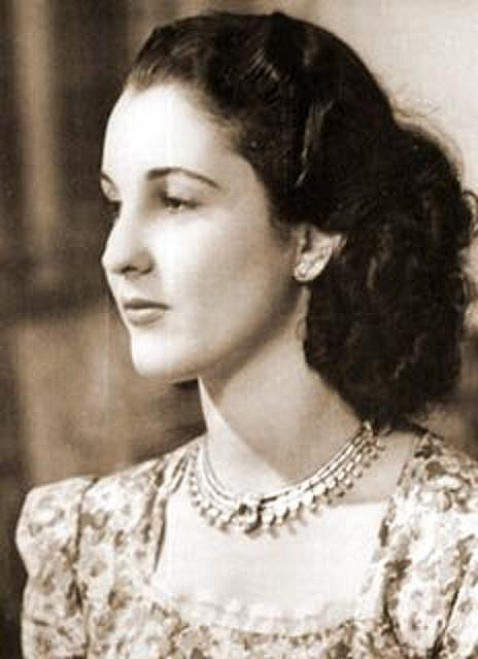
The Young Princess Faiza of Egypt
A rebel princess who chose her own life partner against the wishes of her brother king
Princess Faiza though brought up in the royal tradition of the Egyptian court noted for its extravagance and fairy-tale life style, was intelligent enough to understand that court life with all its trappings was actually a gilded cage, far removed from the real world that operated outside the palace, something which his brother king failed to comprehend and as a result lost his throne. She was a rebel of sorts, determined not to lead a life of court restrictions. She refused to marry a member of a Middle-Eastern royal family, which his brother King Farouk would have preferred, and instead chose to marry her 34-year-old, distant Turkish cousin, Mohammed Ali Bulent Rauf, a western-educated scholar and the grandson of Khedive Ismail Pasha. King Farouk was not in favor of the marriage, but reluctantly endorsed it, as the bridegroom was the grandson of Khedive Ismail Pasha. The marriage took place in Cairo on May 17, 1945.
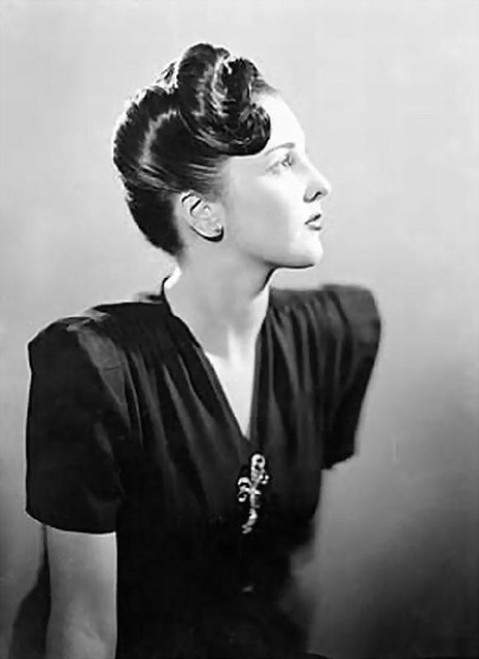
Another image of the beautiful Princess Faiza of Egypt
Her role in playing host to western dignitaries and as the live wire behind the Egyptian Red Crescent Society
After the marriage, Princess Faiza and her husband lived in the Zohria Palace on Gezira Island in the Nile.While living in the Zohria Palace, Princess Faiza and her husband, played host to many western dignitaries including several heads-of-state. She was also the live wire behind the Egyptian Red Crescent Society, a role that helped her to keep in touch with the common man. She and her husband were placed under house arrest for a while on suspicion, by King Farook, who feared the couple's increase in popularity. Six weeks before the military coup that ousted King Farook on July 23, 1952, Princess Faiza and her husband coincidentally launched a homemade film about a military coup, which is what exactly happened subsequently.
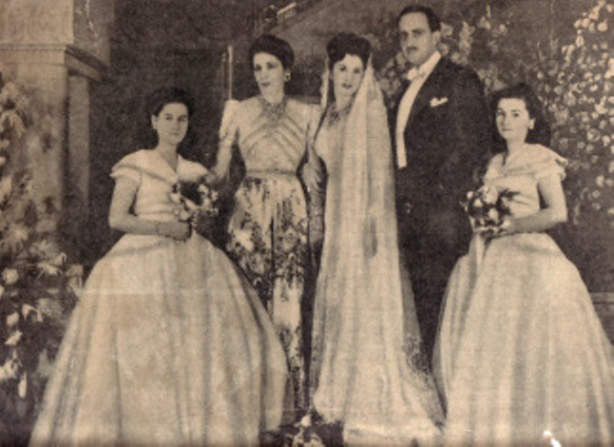
Wedding of H.R.H. Princess Faiza to Mohammed Ali Bulent Rauf in 1945
Her migration to Istanbul in 1954 and later Europe after the 1952 Egyptian revolution
After the 1952 revolution, that led to King Farouk's abdication and going into exile in Europe, where he first settled in Monaco, Princess Faiza and her husband first moved to Istanbul in 1954. Subsequently, they moved to Spain and eventually settled in Paris, France. As they had no issue, the couple divorced in 1962.
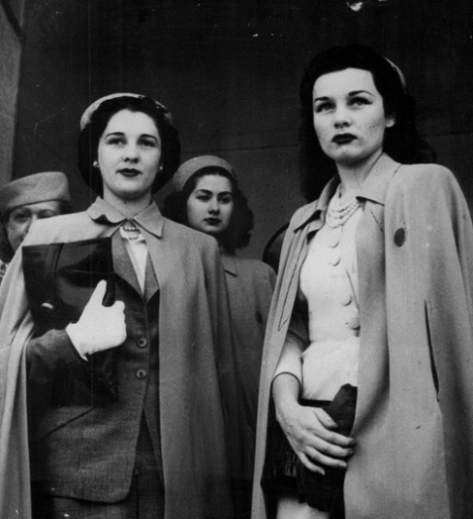
Princess Faiza (left) with Princess Fawzia (middle) and Queen Farida (right) of Egypt
Her migration to the United States and settlement at Beverley Hills, California, closer to her mother and sister already living in exile in California
After the failure of her marriage, she migrated to the United States with her remaining funds, and temporarily settled in the Beverley Hills, California, with her mother Queen Nazli and her sister Princess Fathia, who had married a commoner, Riad Ghali. behind the Egyptian Red Crescent Society,Princess Fathia's marriage with Riad Ghali had angered King Farook, who on August 1, 1950, stripped his mother Queen Nazli of her royal title and monthly allowance of $5,000, and debarred her from returning to Egypt. She lived in exile in Beverley Hills in a 28-room mansion, which became a haven for the family after the King was ousted by a military coup in 1952.
Princess Faiza later settled in Westwood, Los Angeles, California, which was to remain her home until her death in 1994, at the age of 70 years. It is said that ex-king Farouk had visited Princess Faiza at Westwood, before his death in 1965 at Rome.
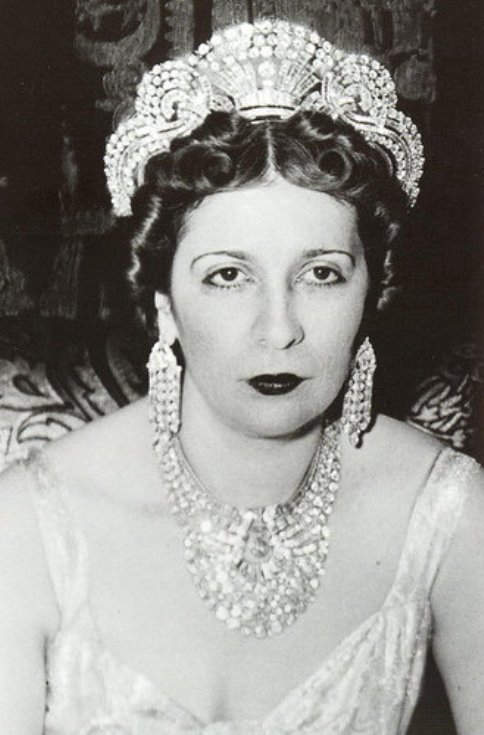
Queen Nazli, mother of King Farouk and Princess Faiza after her Coronation in 1922
Ex-queen Nazli's appeal to President Anwar Sadat to enable her return to Egypt granted but could not materialize due to the murder of her daughter Princess Fathia by her estranged husband
In 1965, ex-queen Nazli attended her son ex-king Farouk's funeral at Rome. Later her daughter Princess Fathia seperated from her husband Riad Ghali, and as her fortunes dwindled, Queen Nazli was forced to sell her 28-room mansion at Beverley Hills. The former queen and her daughter Princess Fathia filed for bankruptcy in 1973, and later auctioned off more than $140,000 worth of queen Nazly's jewels to pay for steadily mounting debts. Mrs. Fathia Ghali was then forced to take up employment to support herself and her mother. In 1976, President Anwar Sadat responded positively to an appeal by ex-queen Nazli and Princess Fathia to return to Egypt and settle down as private citizens. But, unfortunately on the day of their proposed flight to Egypt, Princess Fathia who visited her estranged husband Riad Ghali in his apartment in west Los Angeles, probably to bid him goodbye, was shot dead by her husband, which prevented her from returning to Egypt. Ghali was sent to prison after his conviction on manslaughter charges.
Ex-queen Nazli spent her last years in a Beverley Hills home provided by friends. She died on May29, 1978, in Beverley Hills, California.
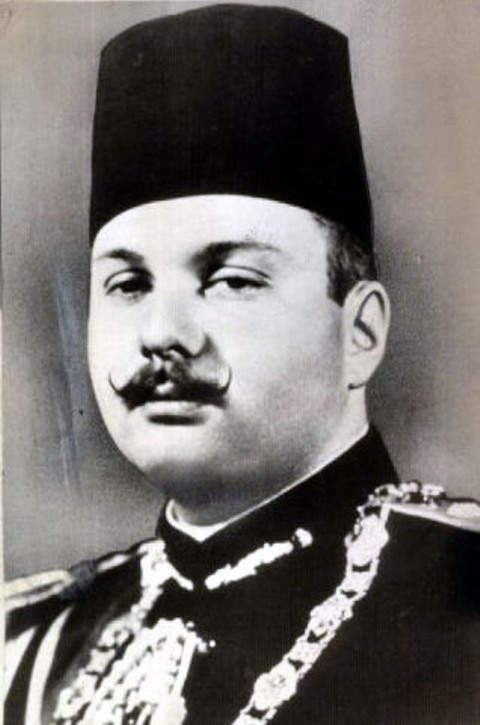
Farouk I - King of Egypt and the Sudan
Princess Faiza's life as a socialite in Beverley Hills, and her loyalty to Egypt at the time of the devastating earthquake in 1992
Princess Faiza who settled in Westwood, Los Angeles, California, chose to remain single despite offers by rich suitors to marry her. She kept her husband's name, whom she always remembered with great affection. At Beverley Hills she mixed freely with people from every walk of life and became a well-known socialite, popular at Westside charity events. In spite of her new life at Beverley Hills, Princess Faiza like all exiled people deep down longed for her country. However, she could not be persuaded to return to Egypt, even by President Anwar Sadat. But her loyalty to her country never lagged behind whenever the occasion demanded. This was clearly demonstrated in the aftermath of the 1992 devastating Egyptian earthquake, that killed 545 people, injured more than 6,500 and made 50,000 people homeless. Princess Faiza led the efforts to raise funds for the unfortunate victims of the earthquake, who were after all her own countrymen.
Princess Faiza's refined taste for trendsetting haute couture and jewelry
Princess Faiza's most preferred jewelry house was Van Cleef & Arpels and couture house Chanel
Princess Faiza, who was very lively and witty, as a young princess is reported to have had a wonderful taste for clothes and jewels. She was a trendsetter of her period, and a regular customer of the Parisian couture houses, with a special preference for Chanel. However, for her requirements of fine jewelry she invariably chose Van Cleef & Arpels, her favorite jewelry house, and the designers of the Art Deco emerald and diamond necklace, the subject of this webpage.
Van Cleef & Arpels famous piece the opening and closing pivoine clips was also part of Princess Faiza's collection
 t
t
Drawing of opening and closing pivoine clips from the archives of Vancleef & Arpels
One of the most famous jewels ever made by Van Cleef & Arpels is the double 'Clip Pivoine', two peonies flowers, set in the famous "Serti Mysterieux"
or "Mystery Setting"
for which Van Cleef & Arpels is so famous, are joined together with diamond leaves. The flower petals are set with 706 square-cut red rubies and 239 circular-cut and baguette-cut white diamonds. The craftsmanship of that piece is so unique that it seems the petals would move if you blow on them. That double clip was also part of Princess Faiza's collection. She sold the two brooches separately a few years before she died in 1994. Fortunately one of them now belongs to the Van Cleef & Arpels antique jewellery collection. The fate of the second flower remains a mystery.

Closing pivoine clip that once belonged to Princess Faiza, from the Van Cleef & Arpels antique jewelry collection
The emerald and diamond fringe necklace also depicts the refined taste of the Princess for exquisitely designed and perfectly crafted pieces like the double pivoine clips
Princess Faiza's emerald and diamond necklace also demonstrates the same refined taste of the princess for pieces of exqusite design and perfect craftsmanship. The emerald drops hang from the diamond motives set in a very pure Art Deco style. The necklace is imposing, which is normal as it was worn by Princess Faiza as a 'Court Jewel', yet it is very graceful and the stones move very gently on the 'décolleté' of the woman who wears the piece.
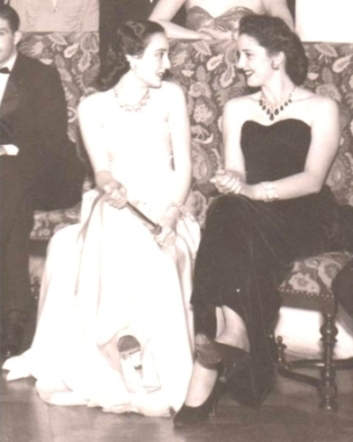
Princess Faiza wearing the emerald and diamond fringe necklace at the 1948 Tahar Palace ball
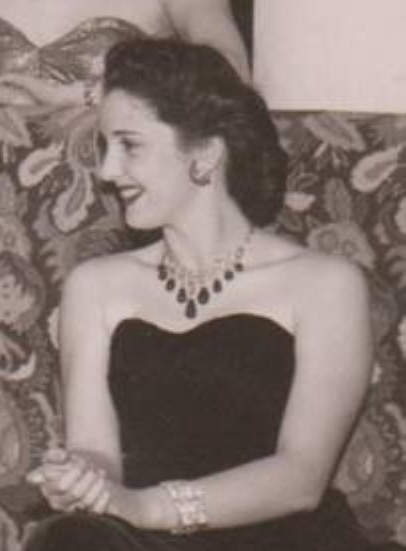
Close-up of Princess Faiza from the above photo
The fate of the Egyptian Crown Jewels after the overthrow of the monarchy in 1952 ?
Egyptian crown jewels accumulated during the 150- year rule of the Mohammed Ali Dynasty was one of the most extensive collections in the Middle-East
The Mohammed Ali dynasty that ruled Egypt for nearly 150 years from 1805 to 1953, was founded by Mohammed Ali Pasha, the Albanian commander of the Ottoman army, who was sent to drive Napoleon's forces out of Egypt, but seized power himself after the French withdrawl. Mohammed Ali Pasha is considered as the founder of modern Egypt. Over the years the Walis, Khedives, Sultans and Kings of the dynasty who ruled initially from the Citadel of Cairo and since the reign of Khedive Ismai I (1867-1879), from the newly built Abdeen Palace, accumulated one of the most extensive collections of crown jewelry in the Middle-East, that included crowns, tiaras, necklaces, bracelets, brooches, earrings, etc. mostly set with diamonds and also other precious stones such as emeralds, rubies, sapphires and pearls.
Considerable quantities of personal jewelry were also accumulated by members of the royal family during this period
At the time the Egyptian monarchy was deposed in 1952, apart from the crown jewels, King Farouk, his sisters and other members of the royal family had accumulated considerable quantities of personal jewelry and other valuables, such as King Farouk's most famous coin collection, which included an extremely rare American Gold Minted 1933 Double Eagle Coin and two 1913 Liberty Head nickles.
In 1954, steps were taken to confiscate the properties of members of the royal family and dispose of the crown jewels
With the abolishment of the monarchy and the declaration of the republic on June 18, 1953 and the assumption of the presidency by Gamal Abdel Nasser on October 26, 1954, following an assassination attempt on his life by the Muslim Brotherhood, steps were taken to confiscate the properties of members of the royal family and to dispose of the crown jewels and King Farouk's vast collection of treasures.
In 1954 a British film crew captured rare footage of officials examining confiscated royal jewels before being auctioned. Today such images offer all that's left of the royal family's vast wealth in jewels. See video below for this footage.
EGYPTIAN CROWN JEWELS ON SHOW BEFORE AUCTION SALE
Hence, it appears that most of the crown jewels of Egypt were disposed of by auction in 1954, but the first jewel shown on this video, Princess Shwikar's platinum tiara, set with 2,159 diamonds and several flawless white drop-shaped pearls is today the most stunning exhibit in the Royal Jewelry Museum, raising doubts about the claim of disposal by auction.
Official authorities in Egypt claim the jewelry left by the Royal Family was kept secure and unseen, until President Hosni Mubarak issued a decree in 1986 converting Princess Fatima Al-Zahra's Palace in Alexandria into a special museum to house the collection
Official authorities in Egypt claim the jewelry left by the Royal Family was kept secure and unseen, until a 1986 decree by President Hosni Mubarak was issued, to assign Princess Fatima Al-Zahra's Palace in Alexandria as a special museum to house those pieces. The museum known as the Royal Jewelry Museum, first inaugurated on October 24, 1986 at Alexandria, Egypt, not only houses the collection of jewels and jewelry of the Mohammed Ali Dynasty, but also art acquisitions by different rulers of the dynasty, such as 19-th century paintings, statutes and other decorative arts. Princess Fatima Al-Zahra's Palace built in 1919 in the European Neoclassical architectural style is an elegant masterpiece of fine architecture and applied arts. The walls and ceilings of the palace are adorned with oil paintings depicting various historical scenes and natural scenery. The palace windows are decorated with lead-inlaid glass artwork also depicting European-style historical scenes.
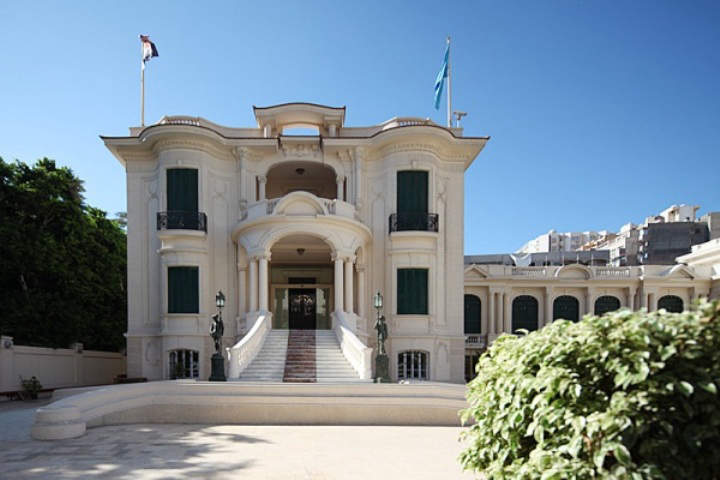
Left wing of the Royal Jewelry Museum, Alexandria, Palace of Princess Fatima al-Zahra
It is said that Princess Fatima Al-Zahra who made the palace in Alexandria her permanent home, lavished much of her fortune in maintaining and beautifying the palace and its surroundings. Even though the Princess was married from outside the royal dynasty, her property including the palace was confiscated by the government, in spite of her protests and law suits filed against the acquisition. Princess Fatima Al-Zahra died in exile in 1983, and did not live to see her palace transformed into a museum housing the royal family jewels.

Mid-1920s Portrait of the young Princess Fatima Al-Zahra
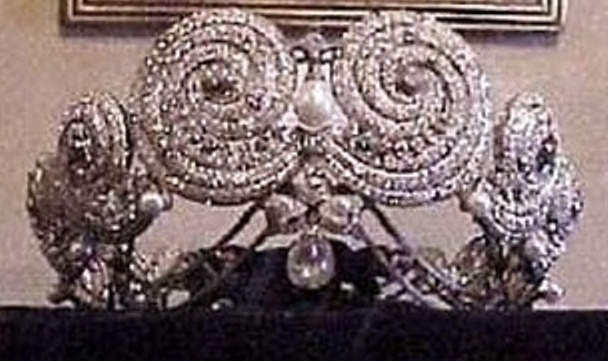
Princess Shwikar's Platinum Tiara, one of the stunning pieces on display at the museum
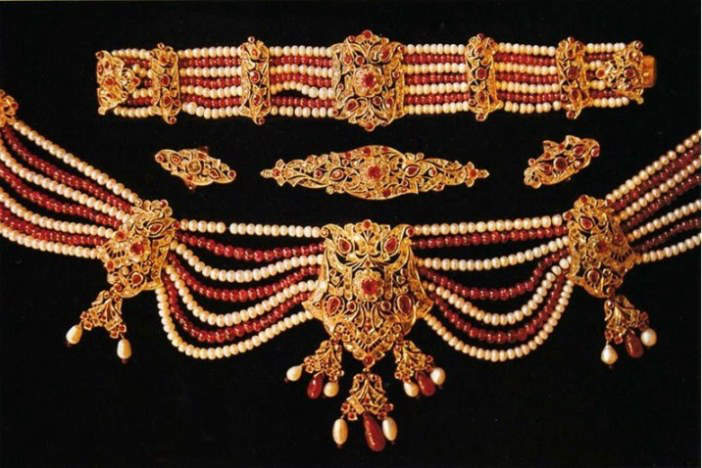
Pearl, ruby and diamond parure - another stunning exhibit at the museum
Jewelry historians and sympathizers of the former Egyptian monarchy believe that what is exhibited at the Royal Jewelry Museum only represents a skeleton of the luxurious collection of what was once the crown jewels of Egypt
Though the collection of jewelry exhibited at the Royal Jewelry Museum, no doubt is a representative collection of the 150-year rule of the Mohammed Ali dynasty, many jewelry historians and sympathisers of the former Egyptian monarchy believe, that the collection only represents a skeleton of the luxurious collection of what was once the crown jewels of Egypt. They believe that only a very few of the jewels confiscated from the royal family ended up in the state treasury, and what is exhibited hardly represent the accumulated treasures of the dynasty that ruled Egypt for nearly 150 years. They believe that the largest and most expensive stones in some of the pieces are "lost" but the craftsmanship of the delicate settings devised by some of the world's most famous jewelers are still intact.
Source of the jewelry pieces either from the Egyptian Crown Jewels or personal jewelry of the royal family, that appeared from time to time at Christie's and Sotheby's auctions
After the revolution, most of the members of the royal family went into exile either in Europe or the United States. They carried with them some of their personal jewelry that were either not confiscated and permitted to be retained or not declared and hidden. Hence, pieces of the crown jewels of Egypt or from the personal jewelry collection of members of the royal family, appearing from time to time at auctions of leading auction houses like Christie's and Sotheby's, are actually pieces that were sold by public auction in 1954 or carried by the members of the royal family when they went into exile. Such pieces of jewelry became an asset to them, and were converted to cash during a financial cisis, either by pledging or outright sale, as ex-queen Nazli did when her resources began to dwindle.
How Princess Faiza's emerald and diamond fringe necklace appeared at the Christie's Magnificent Jewels auction in Geneva in November 2013 ?
The Princess Faiza emerald and diamond fringe necklace, was probably one such jewelry piece retained by the Princess, and disposed of privately to tide over a financial difficulty, especially during the latter part of her life. The anonymous owner of this necklace finally decided to dispose of it through the auction house Christie's at their Geneva Magnificent Jewels sale in November 2013.
Sale of the Princess Faiza emerald and diamond fringe necklace by Christie's at the Magnificent Jewels Sale held in Geneva on November 12, 2013
Christie's in a press release on October 10, 2013, announced the sale of the Princess Faiza emerald and diamond fringe necklace, at the Magnificent Jewels Sale 1400, coming up at Geneva on November 12, 2013. The necklace allotted Lot 209 was titled "An Art Deco Emerald And Diamond Necklace, By Van Cleef & Arpels." The necklace was accompanied by an SSEF report bearing No. 68689, dated June 11, 2013, stating that the 10 emeralds in the necklace are of Colombian origin, with indications of moderate amount of oil; and a certificate of authenticity, dated September 18, 2013, issued by Van Cleef & Arpels stating that the necklace was created in 1929 and modified in 1937.
A pre-sale estimate of USD 2.7 - 3.8 million was placed on the necklace, but the necklace eventually sold for a much enhanced price of USD 4.2 million, which was 1.5 times the lower estimate and 1.1 times the upper estimate.
Factors that led to the selling of the necklace at an enhanced price
The enhance price realized for the necklace was due to a combination of exceptional factors such as :-
1) Provenance - the necklace being the property of an exceptionally beautiful princess from the deposed royal family of Egypt, who adopted Beverley Hills, Los Angeles as her home, where she lived and died, and contributed immensely to raise funds for charitable purposes, including the victims of the 1992 earthquake back home in her own country, Egypt.
2) The necklace being an Art Deco piece designed in 1929, with pure Art Deco features, yet imposing and very graceful, the stones able to move very gently on the décolleté of the woman who wears the piece.
3) The designers of the necklace being Van Cleef & Arpels, a French jewelry company founded in 1896, whose pieces had been worn by famous figures such as the Duchess of Windsor, Maharani Sita Devi of Baroda, Grace Kelly and Elizabeth Taylor.
You are welcome to discuss this post/related topics with Dr Shihaan and other experts from around the world in our FORUMS (forums.internetstones.com)
Related :-
Cambridge and Delhi Dunbar Parure
Emerald and Diamond Parure of Marie Louise Empress of France
Godman Emerald and Diamond Necklace
Norwegian Emerald Parure - Empress Josephine's Emerald Parure
Tumbled Emerald Necklace on Laughing wooden Buddha
External Links :-
2)https://www.independent.co.uk/news/people/obituary-princess-faiza-rauf-1414275.html
3)https://www.britishpathe.com/video/egyptian-crown-jewels-on-show-before-auction-sale/query/royalty
References :-
1) An Art Deco Emerald And Diamond Necklace, By Van Cleef & Arpels - Sale 1400, Lot 209 - www.christies.com
2) The Orange - The Largest Fancy Vivid Orange Diamond in the World - Christie's Press Release, Geneva, 10th October, 2013
3) Farouk of Egypt - From Wikipedia, the free encyclopedia.
4) Faiza Rauf - From Wikipedia, the free encyclopedia.
5) Nazli Sabri - From Wikipedia, the free encyclopedia.
6) Obituary - Princess Faiza Rauf - Richard Hornsby, Saturday, July 16, 1994. www.independent.co.uk
7) Princess Faiza Fouad Rauf; Socialite, Sister of Egypt's Last King - Los Angeles Times, July 15, 1994
8) Alexandria's Royal Jewelry Museum - Part I & II - Alex Aubry - the-polyglot.blogspot.com
9) Royal Jewelry Museum - From Wikipedia, the free encyclopedia
Powered by Ultra Secure
Amazon (USA) Cloud Network

Founder Internet Stones.COM
Register in our Forums
| Featured In
|
|
|
|
|
|
|
|



















